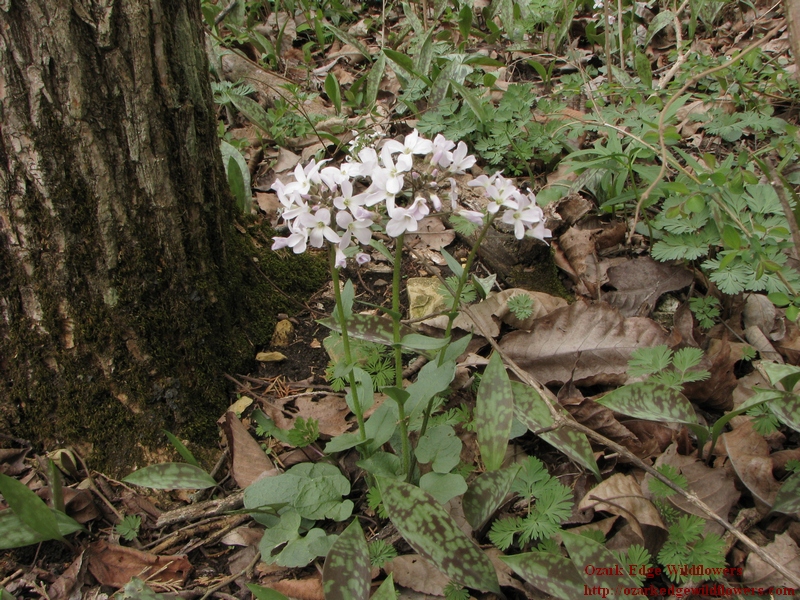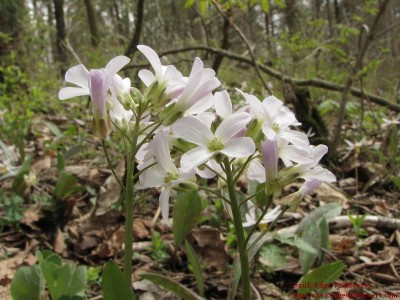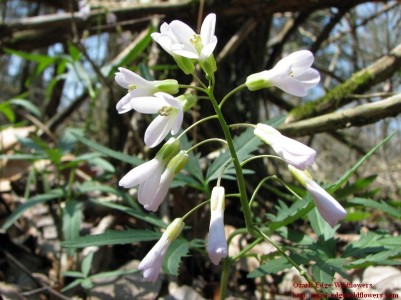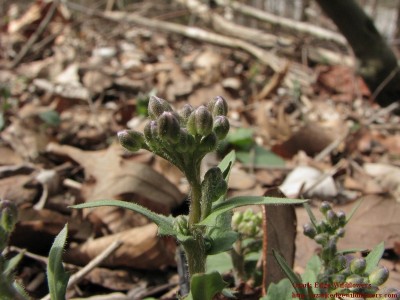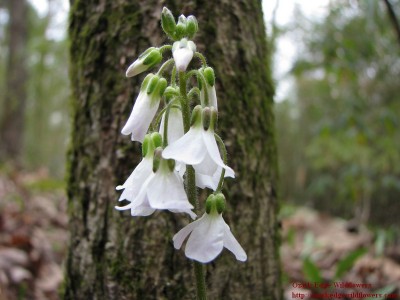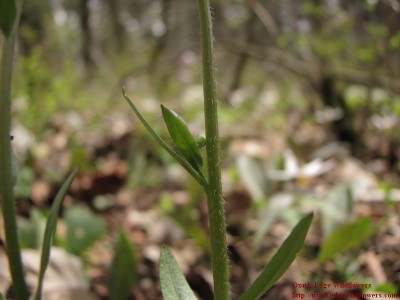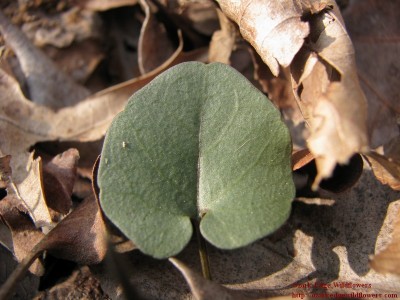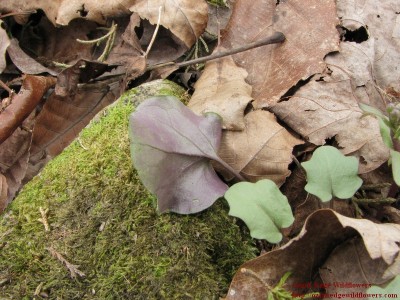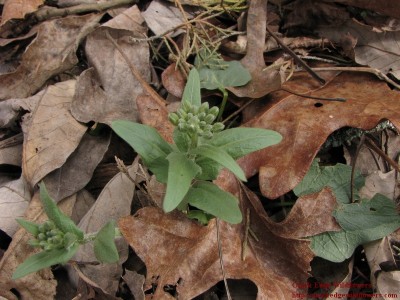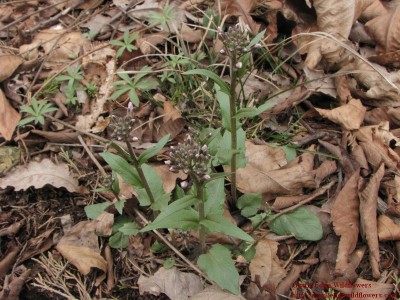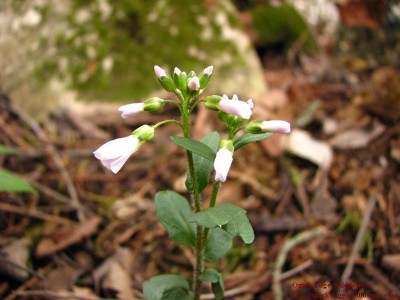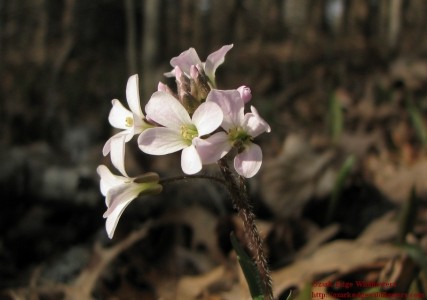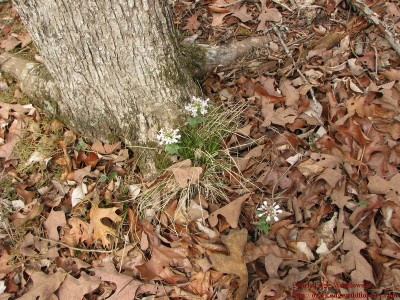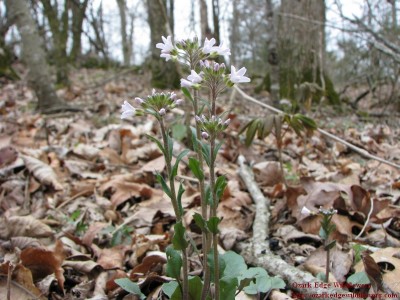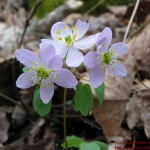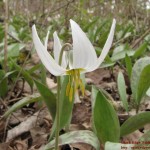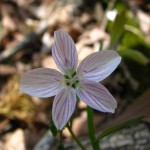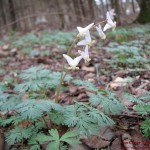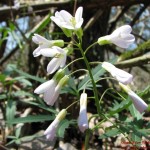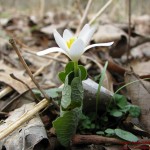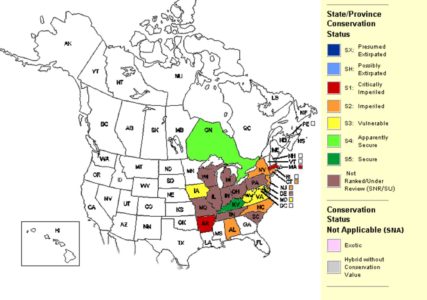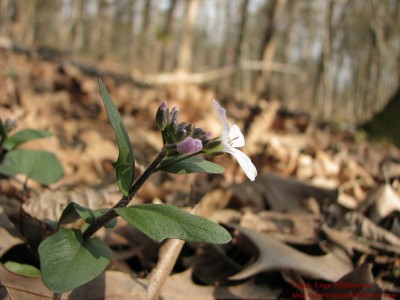Cardamine douglassii is an early woodland wildflower growing in the dappled sun underneath deciduous trees. Each plant produces its own small bouquet of lovely purple or pink. This is a tall plant for a spring wildflower. The blooms rise above the other spring ephemerals. Walking through the spring woods, I see their bouquets dotted here and there, under the oaks. Never too many at once- just enough so that you gasp over and over again at their fresh loveliness.
Latin Name/Common Name- Cardamine is derived from the Greek kardamon, meaning cress. David Douglas (1798-1834) is the namesake for douglassii. He was a Scottish plant collector for the Royal Horticultural Society.
Bloom Color- The soft blooms of Cardamine douglassii are pale purple to pink. The flowers look almost exactly like those of their cousin, Cardamine concatenata. The plants are easy to differentiate though, because the leaves look completely different.
Cardamine douglassii flowers
Cardamine concatenata flowers
Description- Cardamine douglassii is one of the prettiest spring wildflowers. It grows to about a foot tall and is topped with a raceme of buds and flowers. The large flowers are about 0.5 to 1.0 inches in diameter and have 4 petals. They may be drooping or upright. The buds appear early when the plant is only inches high.
Pink buds in early March
Drooping flowers hang like bells
Blooms in full glory mid March
Cardamine douglassii has a single stem which may have one or two branches at the top. The stem is hirsute and light green with a purple tinge toward the base. One or two basal leaves can be seen at the base of the plant. The basal leaves are oval with long petioles. They are usually purple underneath. Stem leaves are alternate, and either sessile or clasping. The leaves become smaller and more narrow toward the top of the stem.
Hairy stem with narrow upper leaves
Basal leaf with oval shape and long petiole
Basal leaf with purple underside
Clasping, alternate leaves
Bloom Time- Cardamine douglassi begins blooming in early March and persists through most of April.
Buds appear on the small plants early March
Just before flowering
Pink buds opening
Beautiful March flowers
Habitat- Cardamine douglassi is found in moist, mesic woodlands. I often see it growing beneath the deciduous trees, especially the large oaks.
What’s Growing Nearby? There are many spring ephemeral companions to be seen growing and blooming near Cardamine douglassii. Erythronium albidum- Trout lilies are seen in thick patches often surrounding a couple of Cardamine douglassi plants. Trillium recurvatum may be seen nearby. It begins blooming just as the Cardamine douglassi blooms start to fade. Cardamine concatenata– Cutleaf toothwort, Claytonia virginica- Spring beauties, Thalictrum thalictrioides- Rue Anenome, Dicentra cucullaria- Dutchman’s breeches, Sanguinaria canadensis- Bloodroot are all blooming nearby. The early leaves of Podophyllum peltatum- Mayapple are also common companions.
Cardamine douglassi in woodland habitat
Rue Anenome Trout lily Spring Beauty
Dutchman’s breeches Cutleaf toothwort Bloodroot
Endangered List- Cardamine douglassii is listed as Special Concern in Connecticut and Endangered in Massachussetts. http://plants.usda.gov/java/profile?symbol=cado
In Arkansas, this beautiful plant is listed as S1 – meaning critically imperiled. You can find a list of Arkansas plants of special concern at this link- http://www.naturalheritage.com/research-data/rarespecies-search.aspx. The spread of a European native- Alliaria petiolata or Garlic mustard is a major pest that is replacing the habitat of Cardamine douglassii. You can read more about Alliaria petiolata and see some excellent pictures on the late Dan Tenaglia’s website- http://www.missouriplants.com/Whitealt/Alliaria_petiolata_page.html. Please be careful not to spread this invasive alien.
Naturserve shows this plant as Critically Imperiled in Arkansas. It’s Imperiled in Alabama, North Carolina, New York, Connecticut and New Jersey. Its Vulnerable in Iowa, Virginia and West Virginia.
*NatureServe. 2018. NatureServe Explorer: An online encyclopedia of life [web application]. Version 7.1. NatureServe, Arlington, Virginia. Available http://explorer.natureserve.org. (Accessed: February 15, 2019 ).
Interesting Tidbits- Deer rarely feed on this plant. The leaves have a bitter taste. The deer much prefer to eat the Mayapple leaves.
